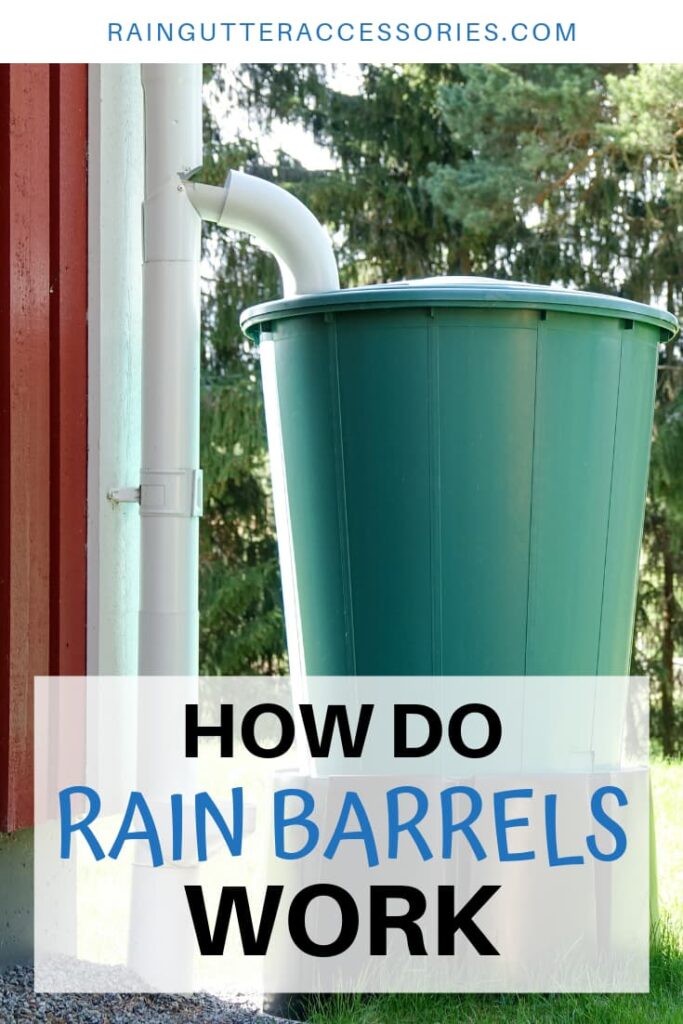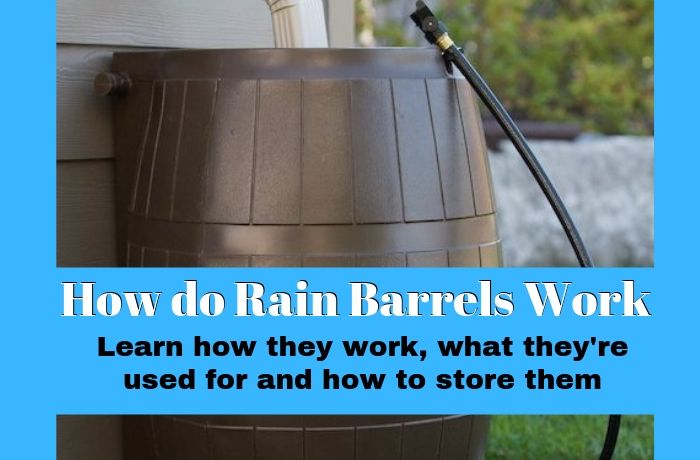Hello there my Rain Barrel Enthusiast (or should I say soon to be?)
If you’re new to all these rain gutter accessories I’m sure one of the questions you’ve had is how do rain barrels work?
Regardless of how long you’ve been interested in gardening, you may not know about one very convenient must-have accessory to add to your passion for all things garden related!
This very handy addition to your gardening experience not only can add to the curb appeal of your home it can also provide benefits to the environment.
If you have never heard of a rain barrel, don’t worry, you are not alone. You’ve most likely seen them at your local nursery or Home Improvement Store and not really given them a second thought.
I’m going to share with you what this somewhat plain and unusual looking barrel does, and you’ll see why they are becoming more and more popular in gardens and homes. Especially when it comes to rainwater harvesting.
A rain barrel is exactly that; a barrel that catches rain by connecting it to your gutter or rain chains and catching all rain runoff allowing it to be stored for later use (especially during droughts or when water restrictions are in place).
How to use a rain barrel.
A rain barrel is easy to install and simply needs to be hooked up to your gutter using one of a few methods (all depending on the type of rain barrel you choose to purchase).
Once connected, turn on the spigot or tap and you’re good to go: any rain will be collected or harvested for future use.
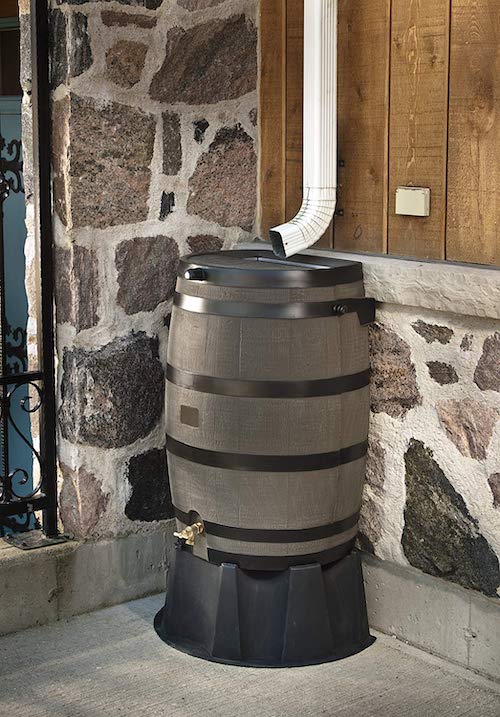
It may surprise you to know that rain barrels can fill up pretty quickly, so we advise you to look into buying something to stop it from overflowing.
You can buy a barrel gutter attachment or a DIY Rain Barrel diverter kit, both can be bought online or from your Home Improvement Store.
Alternatively, you could buy more than one barrel and place them where rain runoff is most likely to occur, or you can connect them.
One of the questions I was thinking about was what happens when the rain barrel overflows?
I found out that most rain barrels have an overflow valve near the top where the excess rainwater will drain out when the barrel is full. You can attach a hose and control where the runoff water will go. Just keep this in mind when you’re looking to purchase a rain barrel.
Some people have numerous barrels creating an entire rain harvesting system, but I suggest starting off small and getting an understanding of your specific needs before going big.
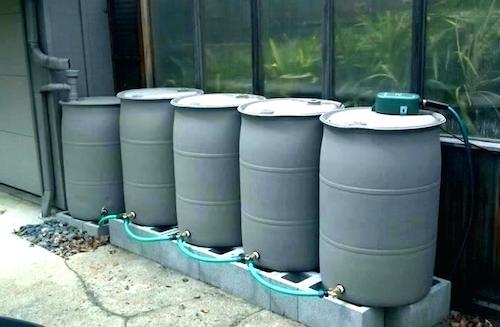
What do you do with rain barrels in the winter?
If you live in a colder climate, in other words, you get to experience the wonder of snow and below-freezing temperatures (this may or may not be sarcasm), making sure your rain barrel stays intact is not a difficult task.
As you can imagine, freezing of the barrel will cause damage to it, as well as to some of its components. To prevent this from happening simply open the tap and let it drain slowly until it is completely empty. Once that’s is done, you can either store it in a garage or another indoor area until the winter months are over.
You can search on YouTube for great videos on how to winterize your rain barrel but I found this one that was super simple and showed how you can do it. Of course, the steps will always be different depending on which rain barrel you have.
While the tap is unlikely to be damaged, you should remove any other attachments including the diverter kit, and very importantly, remove the gutter extension so there is no overflow of water while the barrel is not in use.
Your best bet is to do this before full-blown winter hits!
Do rain barrels need pumps?
You’ll be pleased to hear that rain barrels don’t typically need pumps as long as they are off the ground.
This means that owners, especially new owners, have less to worry about and it also means less effort, cost, and maintenance.
This is where I get very real with you and you learn a little something about me. I am not a math whiz, as a matter of fact, math scares me, so when doing the research for these rain barrels I learned all about pressure and psi.
What I learned…A water level 2.31 feet above its exit point will produce 1 PSI (pounds per square inch). This means the level of the water inside of your barrel has to be 2.31 feet above the irrigation system which it supplies to generate just 1 PSI.
So basically the higher elevated your rain barrel is, the harder the water will come out. You just want to make sure that the base for your rain barrel can hold the weight of the barrel when full.
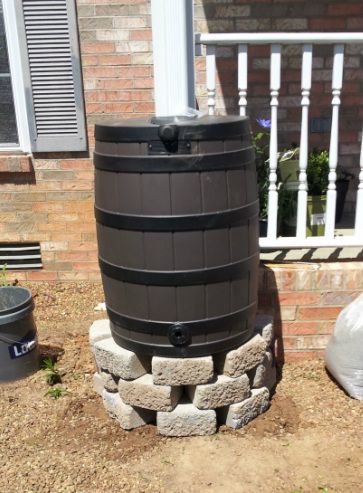
Water pressure is achieved naturally in barrels; most people attach a hose to the barrel when they are ready to use the harvested rainwater. The shorter the hose, the higher the pressure and vice versa.
I will say that if you are looking to be able to spray off your back patio or do anything that is going to need more pressure, you’ll definitely want to get a motorized pump.
So there you have it.
Who knew a rain barrel could be so interesting and functional? Once you own one, you’ll most likely wonder what on earth you did before you had it.
They’re convenient, cost-effective, good for the environment, easy to use, and a very handy gardening tool.
Believe it or not, Rain barrels have been around for years, but with new designs and functions, they are becoming more and more popular.
Make sure you shop around before deciding on your first rain barrel, ask around, check out reviews, and make sure you get a barrel that suits your needs.
Have anything to add? Are you an experienced rain-water harvester and would like to share your experience? I would love to hear all about it and who knows you could be helping a fellow rain barrel enthusiast out.
Y’all Be Blessed,
Audrey
Save it to Pinterest So You Have it Later!
